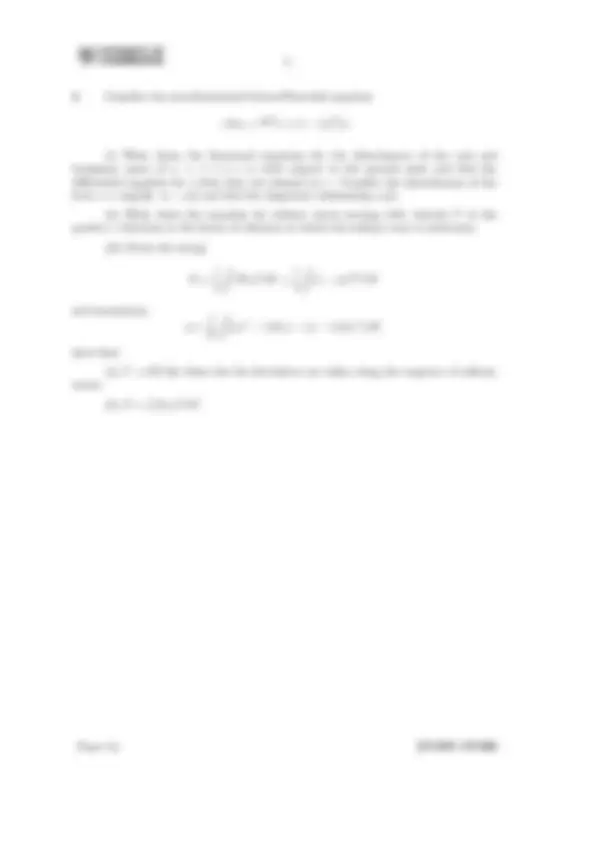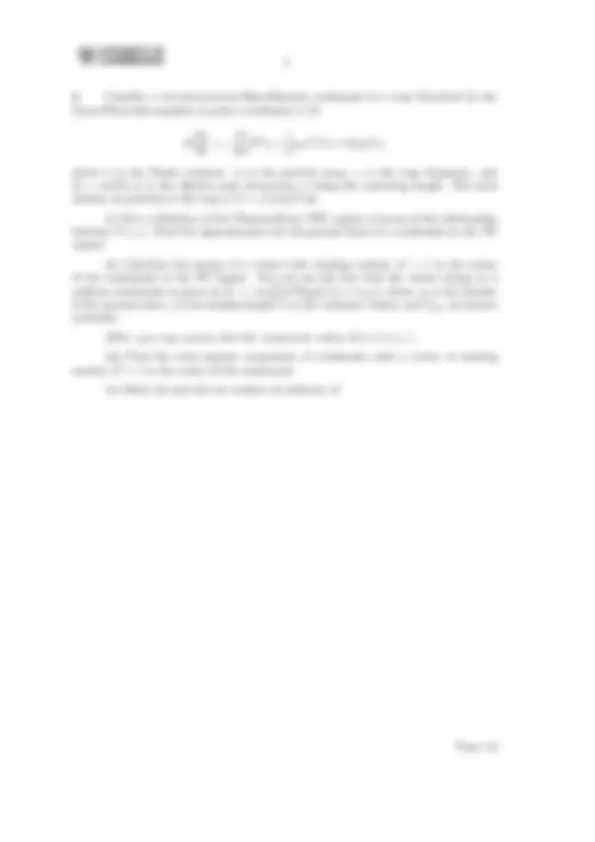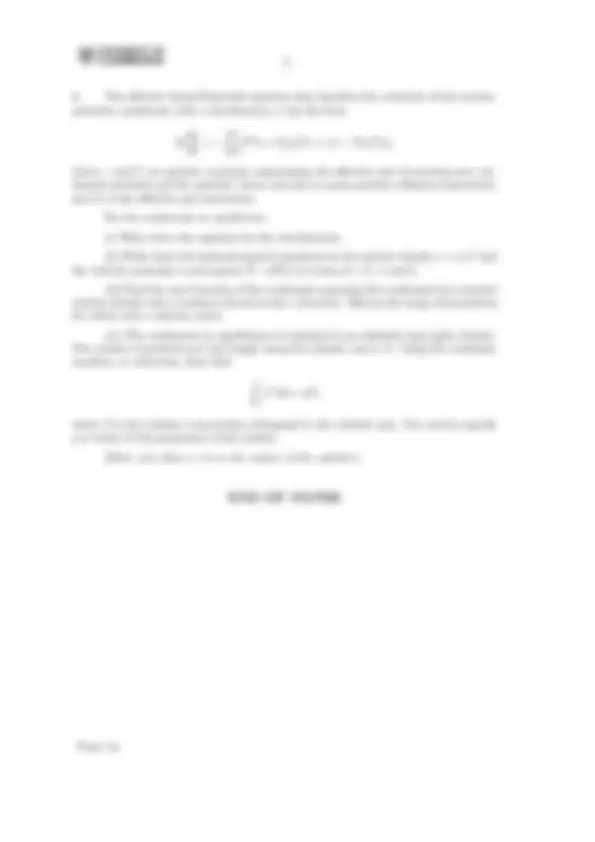





Study with the several resources on Docsity

Earn points by helping other students or get them with a premium plan


Prepare for your exams
Study with the several resources on Docsity

Earn points to download
Earn points by helping other students or get them with a premium plan
Community
Ask the community for help and clear up your study doubts
Discover the best universities in your country according to Docsity users
Free resources
Download our free guides on studying techniques, anxiety management strategies, and thesis advice from Docsity tutors
This is the Past Exam Paper of Mathematical Tripos which includes Solitons and Instantons, Smooth Function, Scalar Field Theory, Derrick Scaling Arguments, Bogomolny Equations, Topological Degree, Sigma Model Lumps etc. Key important points are: Quantum Fluids, Energy Functional, Three-Body Interaction Potentials, Gross-Pitaevskii Equation, Equilibrium State, Uniform Number Density, Stationary Equation, Chemical Potential, Straight Line Vortex
Typology: Exams
1 / 5

This page cannot be seen from the preview
Don't miss anything!




Wednesday 6 June 2007 9.00 to 11.
Attempt TWO questions.
There are FOUR questions in total.
The questions carry equal weight.
Cover sheet None Treasury Tag Script paper
1 The energy functional of a quantum fluid described by a wavefunction ψ is given by
E =
2 m
|∇ψ|^2 +
|ψ|^4 +
|ψ|^6
dx,
where V 0 and W 0 are the effective two- and three-body interaction potentials.
(i) Write down the corresponding (generalised) Gross-Pitaevskii equation, given by
iℏψt = δE/δψ∗.
(ii) Write down the stationary equation for the equilibrium state of the fluid for a given number of particles.
(iii) Relate the chemical potential, μ, to the uniform number density, n 0 = |ψ 0 |^2 of the ground state ψ 0 =const.
(iv) Show that the dimensionless form of the stationary equation you obtained in (ii) can be written as
∇^2 ψ˜ + (1 − α| ψ˜|^2 − β| ψ˜|^4 ) ψ˜ = 0, ψ˜ → 1 at infinity, (∗)
where α and β are constants. Specify α, β and the unit of distance.
(v) Use (∗) to write down the equation for the amplitude R(r) of the straight- line vortex of winding number N , that is positioned along the z−axis in cylindrical coordinates (r, θ, z). Show that at large r the amplitude can be approximated by R(r) ∼ 1 − p/r^2 + O(r−^3 ) and specify the constant p in terms of β and N only.
Paper 84
3 Consider a two-dimensional Bose-Einstein condensate in a trap described by the Gross-Pitaevskii equation in polar coordinates (r, θ)
iℏ
∂ψ ∂t
2 m
∇^2 ψ +
mω^2 r^2 ψ + V 0 |ψ|^2 ψ,
where ℏ is the Plank constant, m is the particle mass, ω is the trap frequency, and V 0 = 4πℏ^2 a/m is the effective pair interaction, a being the scattering length. The total number of particles in the trap is N =
|ψ(x)|^2 dx.
(i) Give a definition of the Thomas-Fermi (TF) regime in terms of the relationship between N, a, ω. Find the approximation for the ground state of a condensate in the TF regime.
(ii) Calculate the energy of a vortex with winding number N = 1 in the centre of the condensate in the TF regime. You can use the fact that the vortex energy in a uniform condensate is given by Ev = πn 0 ℏ
2 m N^
(^2) [log(L/ξ) + L 0 N ], where n 0 is the density
of the ground state, ξ is the healing length, L is the container radius, and L 0 N are known constants.
[Hint: you may assume that the condensate radius R L ξ .] (iii) Find the total angular momentum of condensate with a vortex of winding number N = 1 in the centre of the condensate.
(iv) Redo (ii) and (iii) for vortices of arbitrary N.
Paper 84
4 The effective Gross-Pitaevskii equation that describes the evolution of the exciton- polariton condensate with a wavefunction ψ has the form
iℏ
∂ψ ∂t
2 m
∇^2 ψ + V 0 |ψ|^2 ψ + i(γ − Γ|ψ|^2 )ψ,
where γ and Γ are positive constants representing the effective rate of creating new con- densate particles and the particles’ decay rate due to many particle collisions respectively, and V 0 is the effective pair interaction.
For the condensate in equilibrium:
(i) Write down the equation for the wavefunction. (ii) Write down the hydrodynamical equations for the number density n = |ψ|^2 and the velocity potential φ and express ∇ · (n∇φ) in terms of γ, Γ, n and ℏ.
(iii) Find the wave function of the condensate assuming the condensate has constant number density and a constant velocity in the x direction. Discuss the range of parameters for which such a solution exists.
(iv) The condensate in equilibrium is contained in an infinitely long right cylinder. The number of particles per unit length along the cylinder axis is N. Using the continuity equation, or otherwise, show that
∫
S
n^2 dx = qN,
where S is the cylinder cross-section orthogonal to the cylinder axis. You need to specify q in terms of the parameters of the system.
[Hint: note that n = 0 on the surface of the cylinder.]
Paper 84